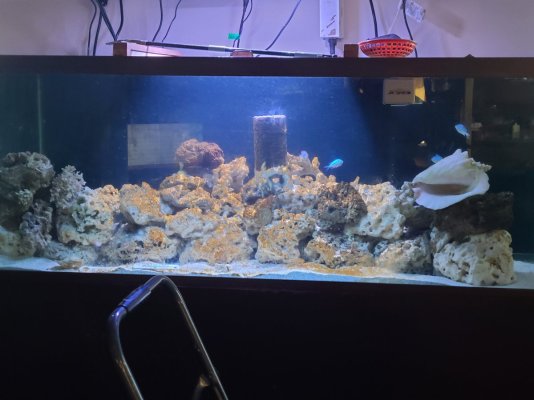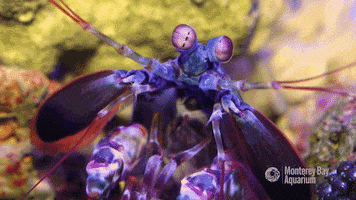- Joined
- May 7, 2020
- Messages
- 230
- Reaction score
- 563
I posted previously as having a 90 gallon tank, with plans to move into a 180 gallon tank. 2 years ago there was an ice storm here in Oregon and my 90 gallon tank crashed.
I now have a 180 gallon tank with a 50 gallon (ish) sump, and a 90 gallon (my old tank) refugium.
I have 4 chromis and 4 firefish in the 180 who are doing fine. I tried to add some snails, hermit crabs, and emerald crabs. They all died. The crabs lasted a little longer than the snails, but everything died pretty quickly. The LFS owner I got them from talked about the possibility of heavy metals in the water. What's the best way to check for that? If that is the case, the only possible sources I can think of are a chunk of concrete in the water or the pump I use to transport water to the system from my salt water mixing system, which dies have rust on the bleeder plug. Should I eliminate one or both things right away, or test first? My best guess is the fish will be okay for now, and that every crustacean in my rock is already dead. Testing shows no ammonia, no nitrates, and 10 ppm of nitrate. I do have brown algae starting. I thought I knew what I was doing, since I was following the pattern that worked very well when starting my 90 gallon tank, but I guess still have much to learn.

I now have a 180 gallon tank with a 50 gallon (ish) sump, and a 90 gallon (my old tank) refugium.
I have 4 chromis and 4 firefish in the 180 who are doing fine. I tried to add some snails, hermit crabs, and emerald crabs. They all died. The crabs lasted a little longer than the snails, but everything died pretty quickly. The LFS owner I got them from talked about the possibility of heavy metals in the water. What's the best way to check for that? If that is the case, the only possible sources I can think of are a chunk of concrete in the water or the pump I use to transport water to the system from my salt water mixing system, which dies have rust on the bleeder plug. Should I eliminate one or both things right away, or test first? My best guess is the fish will be okay for now, and that every crustacean in my rock is already dead. Testing shows no ammonia, no nitrates, and 10 ppm of nitrate. I do have brown algae starting. I thought I knew what I was doing, since I was following the pattern that worked very well when starting my 90 gallon tank, but I guess still have much to learn.




















